If your face turns red for no obvious reason-whether from heat, stress, or just walking outside-you’re not alone. Millions of people deal with persistent redness, flushing, or the telltale signs of rosacea. And while some turn to heavy makeup or expensive lasers, there’s a quiet hero in skincare that’s been helping dermatologists and patients for decades: azelaic acid.
What azelaic acid actually does to your skin
Azelaic acid isn’t a new trend. It’s been used since the 1980s, originally derived from grains like barley and wheat. Today, it’s made synthetically in labs for skincare products. You’ll find it in creams, gels, and serums, usually at concentrations between 10% and 20%. It’s not a miracle worker, but it’s one of the few ingredients that tackles multiple skin issues at once: redness, bumps, uneven tone, and even mild acne.
Here’s how it works: azelaic acid doesn’t just sit on top of your skin. It slips into the upper layers and starts calming things down. It reduces the number of inflammatory cells that cause swelling and heat. It also slows down the overproduction of keratin, which can clog pores and lead to those tiny bumps common in rosacea. Unlike some harsher treatments, it doesn’t strip your skin or make it more sensitive to the sun.
Why it’s better than other redness treatments
Many people try hydrocortisone creams for redness. They work fast-but only for a few days. Long-term use can thin your skin, cause more redness, or even trigger rebound flushing. Other options like brimonidine gel shrink blood vessels temporarily, but the redness often comes back worse after the effect wears off.
Azelaic acid works differently. It doesn’t just mask the problem-it fixes the root cause. Studies show it reduces the number of abnormal blood vessels in the skin over time. One 2018 clinical trial with 120 participants found that after 16 weeks of using 15% azelaic acid gel twice daily, 78% saw a significant drop in facial redness and flushing episodes. The improvement didn’t vanish when they stopped using it. That’s rare.
It also helps with post-inflammatory hyperpigmentation. If your skin leaves behind dark spots after a breakout or flare-up, azelaic acid fades them. It doesn’t bleach skin-it just balances pigment production. That’s why it’s safe for all skin tones, including deeper ones that react poorly to other lightening agents.
Who benefits the most from azelaic acid
If you have rosacea-especially the erythematotelangiectatic type (the kind with constant redness and visible blood vessels)-azelaic acid is one of the top recommended treatments. It’s also great for people who get redness after using retinoids, chemical peels, or even strong cleansers. Even if you don’t have a formal diagnosis, but your face turns red easily and stays that way, it’s worth trying.
It’s not ideal for everyone. If your skin is severely cracked, raw, or weeping, wait until it heals first. Azelaic acid can sting a little when you start using it. That’s normal. But if it burns for more than a few minutes or causes swelling, stop and talk to a dermatologist.
It’s also safe during pregnancy and breastfeeding, which is a big deal. Most acne and redness treatments aren’t. That’s why many OB-GYNs and dermatologists recommend it to expecting moms who struggle with hormonal breakouts and flushing.
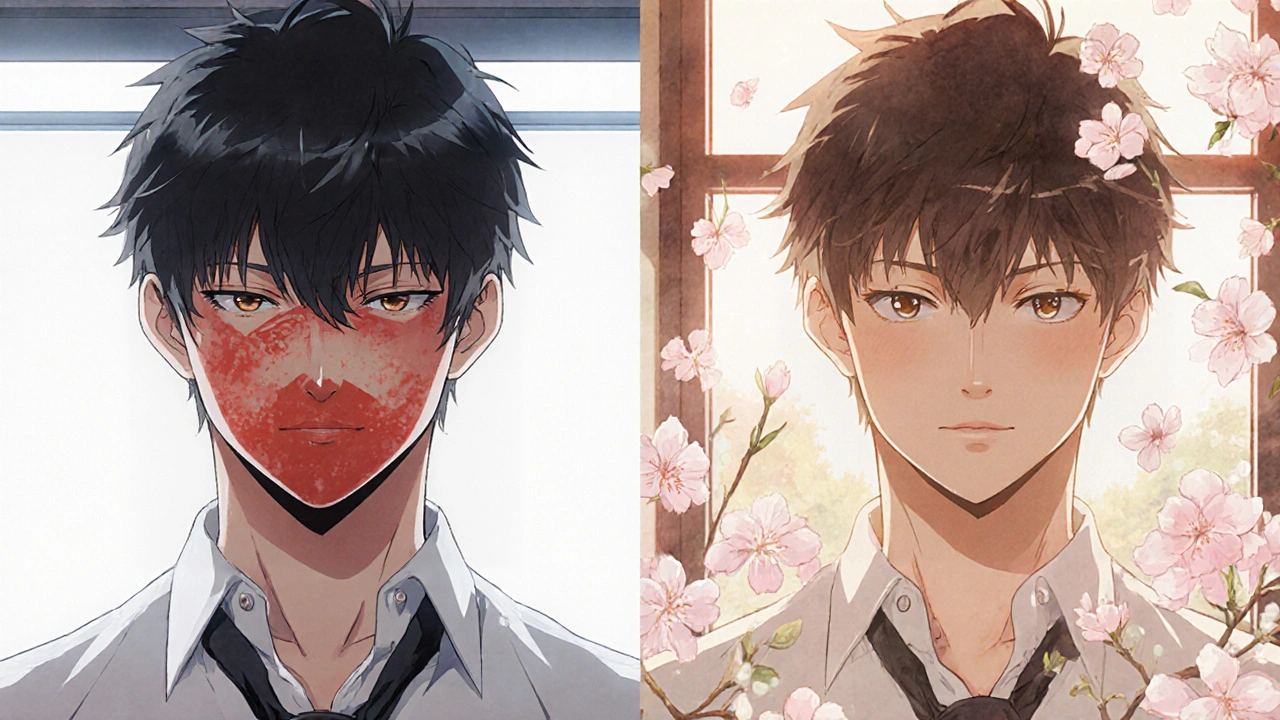
How to use azelaic acid correctly
You don’t need to use it like a miracle cure. Here’s the simple routine that works for most people:
- Wash your face with a gentle, fragrance-free cleanser. Pat dry-don’t rub.
- Wait 5 minutes. Let your skin calm down before applying anything.
- Apply a pea-sized amount of azelaic acid gel or cream to your entire face, focusing on red areas. Avoid the eyes and lips.
- Wait another 10 minutes, then follow with a simple moisturizer. Look for ones with ceramides or niacinamide-they help repair your skin barrier.
- Use it twice a day at first. If your skin stings too much, cut back to once daily or every other day until it adjusts.
It takes time. Most people see a difference in 4 to 6 weeks. Full results? Around 12 weeks. Don’t give up after two weeks. This isn’t a quick fix. It’s a slow, steady repair job.
What to avoid when using azelaic acid
Even though azelaic acid is gentle, it doesn’t play well with some things:
- Strong exfoliants: Avoid combining it with high-percentage glycolic acid, salicylic acid, or physical scrubs. You’ll irritate your skin.
- Alcohol-based toners: These dry out your skin and make redness worse.
- Heavy fragrances: Perfumed lotions, essential oils, and scented sunscreens can trigger flushing. Stick to fragrance-free.
- Hot showers and saunas: Heat is one of the biggest triggers for flushing. Keep water lukewarm.
Also, don’t skip sunscreen. Azelaic acid doesn’t make you sun-sensitive, but your skin is already more reactive. Use a mineral sunscreen with zinc oxide or titanium dioxide every morning. It’s non-negotiable.
Real results from real users
One woman in Rochester, 42, started using azelaic acid after years of trying everything-from antibiotics to laser treatments. She said her face used to turn bright red every time she walked into a warm room. After three months of twice-daily use, she noticed her skin stayed calm even during winter walks and coffee dates. She still gets occasional flushes, but they’re shorter and less intense. She stopped wearing green-tinted foundation. That’s how much it changed.
Another user, a 35-year-old man with persistent acne and redness, found that azelaic acid cleared his bumps without drying his skin like benzoyl peroxide did. He now uses it as his daily treatment and says it’s the only thing that didn’t make him feel like his skin was being punished.
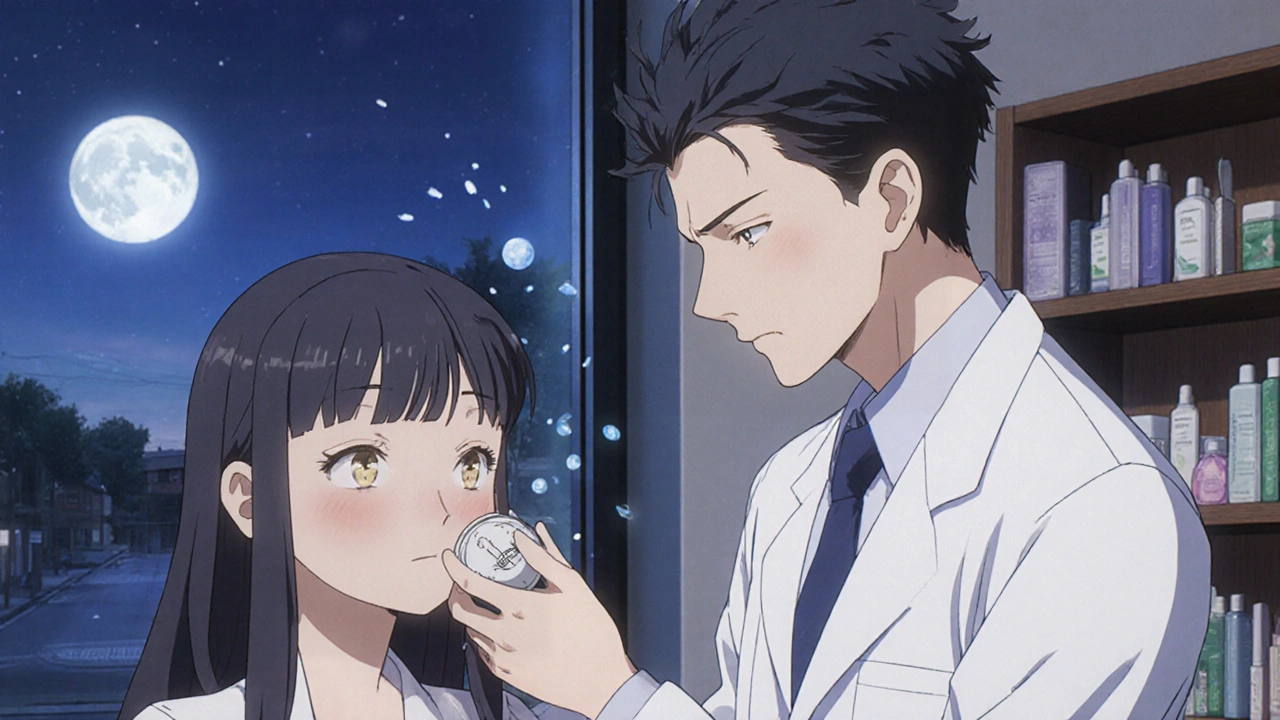
Where to find it and what to look for
You can get azelaic acid over the counter in lower concentrations (10%), but the stronger versions (15%-20%) need a prescription. Brands like Finacea (15%) and Azelex (20%) are common. Generic versions are just as effective and often cheaper.
Check the label: make sure it says “azelaic acid” and not just “barley extract” or “natural brightener.” Those won’t help. Also, avoid products that mix it with retinol or vitamin C unless you’re experienced. Too many active ingredients at once can backfire.
Pharmacies in Rochester carry prescription azelaic acid, and many dermatologists offer samples. If you’re unsure, ask for a patch test first. Apply a small amount behind your ear for three days. If there’s no reaction, it’s safe to try on your face.
What happens if you stop using it
Like most skincare treatments for chronic conditions, azelaic acid works best when used consistently. If you stop, your redness and flushing may return over time. That doesn’t mean you have to use it forever. Some people taper down to every other day or just a few times a week once their skin stabilizes. Others keep using it long-term because it’s so gentle and effective.
The key is listening to your skin. If it stays calm after a break, great. If it starts flaring again, go back to your routine. There’s no shame in needing ongoing care. Skin conditions like rosacea are medical, not cosmetic.
When to see a dermatologist
If you’ve tried azelaic acid for 12 weeks with no improvement, it’s time to check in. You might have another condition-like lupus, seborrheic dermatitis, or even an allergic reaction. A dermatologist can do a skin biopsy or use a dermoscope to see exactly what’s going on.
Also, if your redness is accompanied by burning, stinging, or thickened skin (especially on the nose), you might need additional treatment. Azelaic acid helps, but it’s not always enough alone.
And if you’re pregnant, nursing, or managing another health condition, always check with your doctor before starting anything new-even if it’s "just a cream."
Can azelaic acid get rid of redness permanently?
No, azelaic acid doesn’t permanently cure redness or rosacea. But it does reduce symptoms significantly and can lead to long-term improvement when used consistently. Many people maintain results by using it a few times a week after their skin stabilizes. It’s a maintenance treatment, not a one-time fix.
Does azelaic acid make skin more sensitive to the sun?
No, azelaic acid doesn’t increase sun sensitivity like retinoids or some acids do. But because your skin is already prone to redness and inflammation, sun exposure can worsen flushing. That’s why daily sunscreen is still essential-it protects your skin’s healing process.
How is azelaic acid different from niacinamide?
Both reduce redness, but they work differently. Niacinamide strengthens the skin barrier and calms inflammation indirectly. Azelaic acid goes deeper-it targets inflammatory cells, reduces abnormal blood vessels, and helps with acne and pigmentation. They can be used together, and many people find the combination powerful.
Can I use azelaic acid with retinol?
It’s possible, but not recommended at first. Both can cause irritation, especially when starting out. Wait until your skin adjusts to azelaic acid (usually 4-6 weeks), then add retinol 2-3 nights a week. Always apply retinol after azelaic acid and use a moisturizer in between.
Is azelaic acid safe for sensitive skin?
Yes, it’s one of the safest options for sensitive skin. It doesn’t contain alcohol, fragrance, or harsh preservatives. Some people feel a slight tingling at first, but that usually fades within a week. If you’re unsure, start with a lower concentration or use it every other day until your skin adapts.
If you’ve been living with redness that won’t go away, azelaic acid might be the answer you’ve been overlooking. It’s not flashy. It doesn’t promise instant results. But it works-quietly, steadily, and without wrecking your skin. And sometimes, that’s exactly what your skin needs.
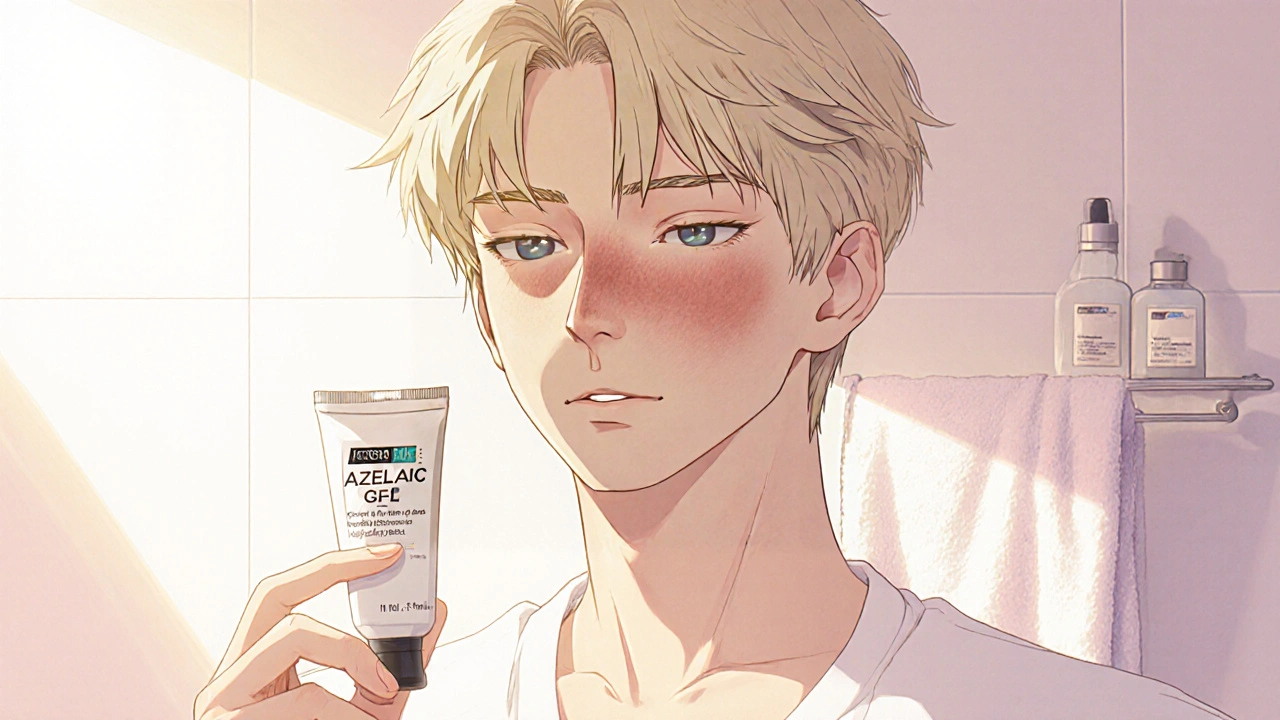


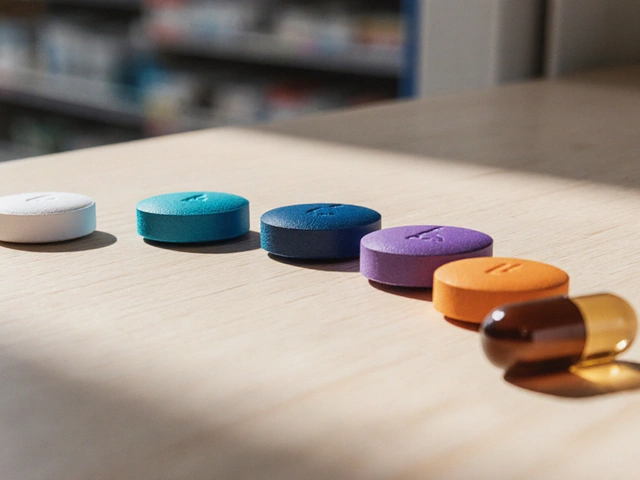

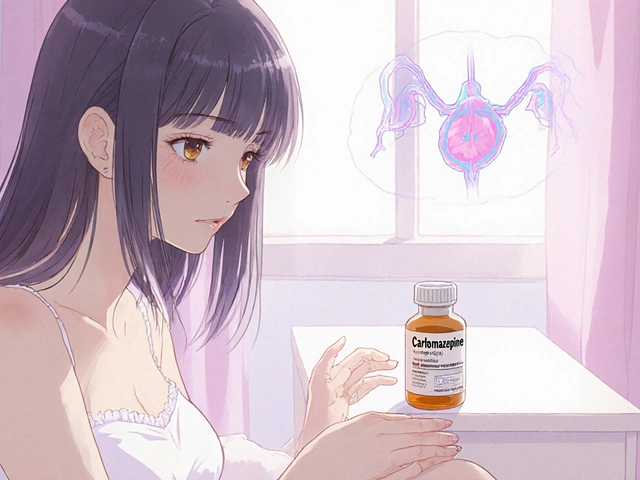

Clyde Verdin Jr
November 5, 2025 AT 06:29Key Davis
November 5, 2025 AT 08:08Cris Ceceris
November 6, 2025 AT 06:59Edward Weaver
November 7, 2025 AT 09:06Lexi Brinkley
November 8, 2025 AT 05:25Kelsey Veg
November 10, 2025 AT 03:53Alex Harrison
November 11, 2025 AT 06:34Jay Wallace
November 12, 2025 AT 16:00Alyssa Fisher
November 13, 2025 AT 21:43Alyssa Salazar
November 14, 2025 AT 18:21